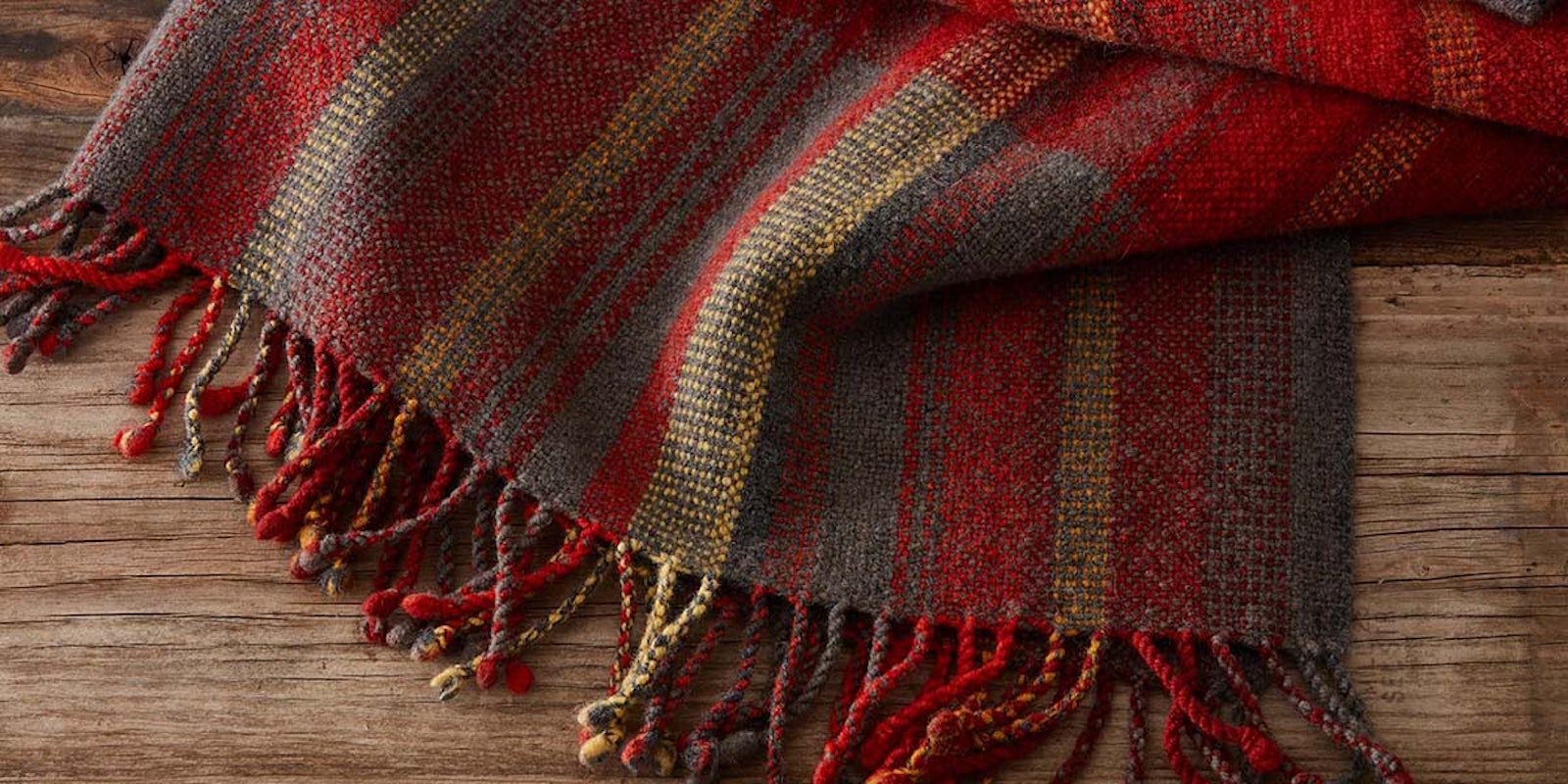I began my weaving career weaving on jack looms with rising shafts, but when the opportunity came up to buy a counterbalance loom at a good price, I jumped at the chance. Every studio needs a selection of looms for different purposes, right? My new counterbalance loom was 60" wide—wonderful for weaving rugs and blankets but also great for towels and scarves. The treadling was very smooth and quiet, and I loved weaving on it. One of the features I liked most about it was that once a shed was opened, it didn’t close until I opened the next shed. That made it simpler to put in lease sticks while winding on.
However, when I warped and threaded a doublewidth blanket on my counterbalance loom, hoping to weave a blanket with a finished width of 110", I ran into some trouble. Doublewidth weaving requires unbalanced sheds, which is not a strong point of counterbalance looms. Their sheds which are normally wide when balanced, diminish when only 1 shaft is lowered, or when 3 shafts are lowered. I thought there might be work-arounds for the next to invisible sheds that I was getting when I started treadling, but I didn’t know them, and the thought of doing any work-around for more than a few inches of treadling didn’t thrill me. The 110" blanket became an 80" blanket woven on a jack loom.
A recent reader’s letter alerted me to Deborah Chandler’s wonderful article, “My Re-Education on Counterbalanced Looms” from Handwoven March/April 1988. I wish I had read Deborah’s article before I embarked on that ill-fated session of warping, sleying, threading, and tensioning 800-plus threads, only to repeat the process for 600 of them on a different loom. This clear, well-illustrated article describes in great detail the counterbalance mechanism and how it works. It explains a work-around that might have helped me in my hour of need and one that I think many counterbalance weavers will find useful. Even if you only weave on jack looms, I still encourage you to read it, just to expand your knowledge of other loom types. Who knows, you might even get inspired to weave a doublewidth blanket on a counterbalance loom.
Weave well,
Susan
--

